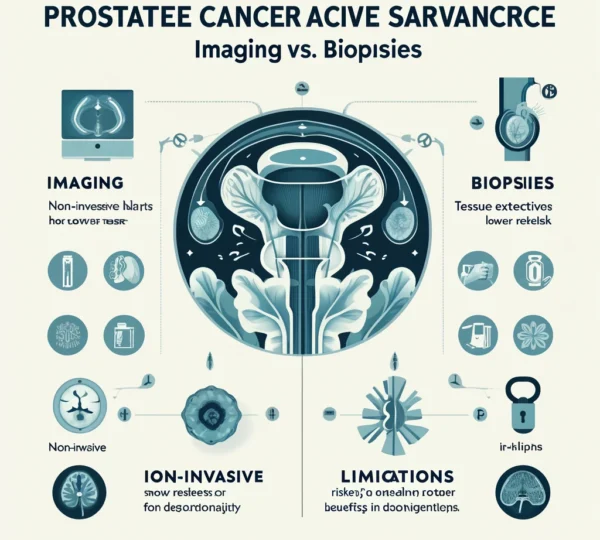Exploring Alternatives: Can Imaging Replace Repeat Biopsies in Active Surveillance for Prostate Cancer?
Introduction: Navigating Choices in Prostate Cancer Active Surveillance
In prostate cancer management, active surveillance provides an essential strategy—a delicate balance between constant monitoring and avoiding unnecessary interventions. This approach is particularly valuable for patients with low-risk prostate cancer. However, a key question arises: Can imaging, a diagnostic tool known for its ability to visualize the body’s inner workings, replace the need for repeat biopsies?
Imaging: A Powerful Tool in Prostate Cancer Management
Imaging plays a crucial role in modern medicine, offering a non-invasive way to capture the details of the body’s interior. By creating visual representations of potential diseases, imaging helps doctors understand the size, shape, and characteristics of prostate cancer, providing important insights.
Biopsies: A Traditional Diagnostic Approach
Biopsy is a fundamental procedure in diagnosing prostate cancer. This method involves extracting tissue from the prostate to examine under a microscope. It offers valuable information about the nature of the cancer and is essential for confirming a diagnosis.
Imaging vs. Biopsies: Can Imaging Replace Repeat Biopsies?
A growing body of research challenges the traditional reliance on biopsies. Studies, such as those published in The Lancet Oncology, suggest that patients monitored with imaging may have similar outcomes to those undergoing repeat biopsies, making imaging a possible substitute for regular tissue sampling.
The Benefits of Imaging in Active Surveillance
Exploring the use of imaging offers several advantages:
- Non-invasive procedure: Unlike biopsies, imaging doesn’t require tissue extraction, making it less invasive and more comfortable for patients.
- Reduced risks: Imaging carries fewer risks of complications, such as infection or bleeding, which are associated with biopsies.
- Enhanced precision: Imaging technologies, such as MRI and ultrasound, may offer highly accurate views of cancerous tissues, potentially detecting abnormalities earlier than biopsies.
Potential Risks and Limitations of Imaging
Despite its potential, imaging has limitations that must be considered:
- Missed detections: Imaging, while powerful, may not always detect small or hidden tumors that biopsies can identify.
- False positives: Imaging results can sometimes suggest cancer when it is not present, leading to unnecessary anxiety and further tests.
Discussing Your Options with Your Healthcare Provider
When deciding between imaging and repeat biopsies, it’s vital to have an open discussion with your healthcare provider. Together, you can review the benefits and risks of each option, helping you make an informed decision that fits your personal health situation.
Conclusion: Imaging’s Role in Active Surveillance
Imaging holds great promise as an alternative to repeat biopsies in active surveillance for prostate cancer. It offers a gentler, less invasive way to monitor the condition while maintaining a high level of accuracy. However, it is crucial to engage in ongoing conversations with your healthcare provider to find the best monitoring strategy tailored to your needs.
For More Information Click here



